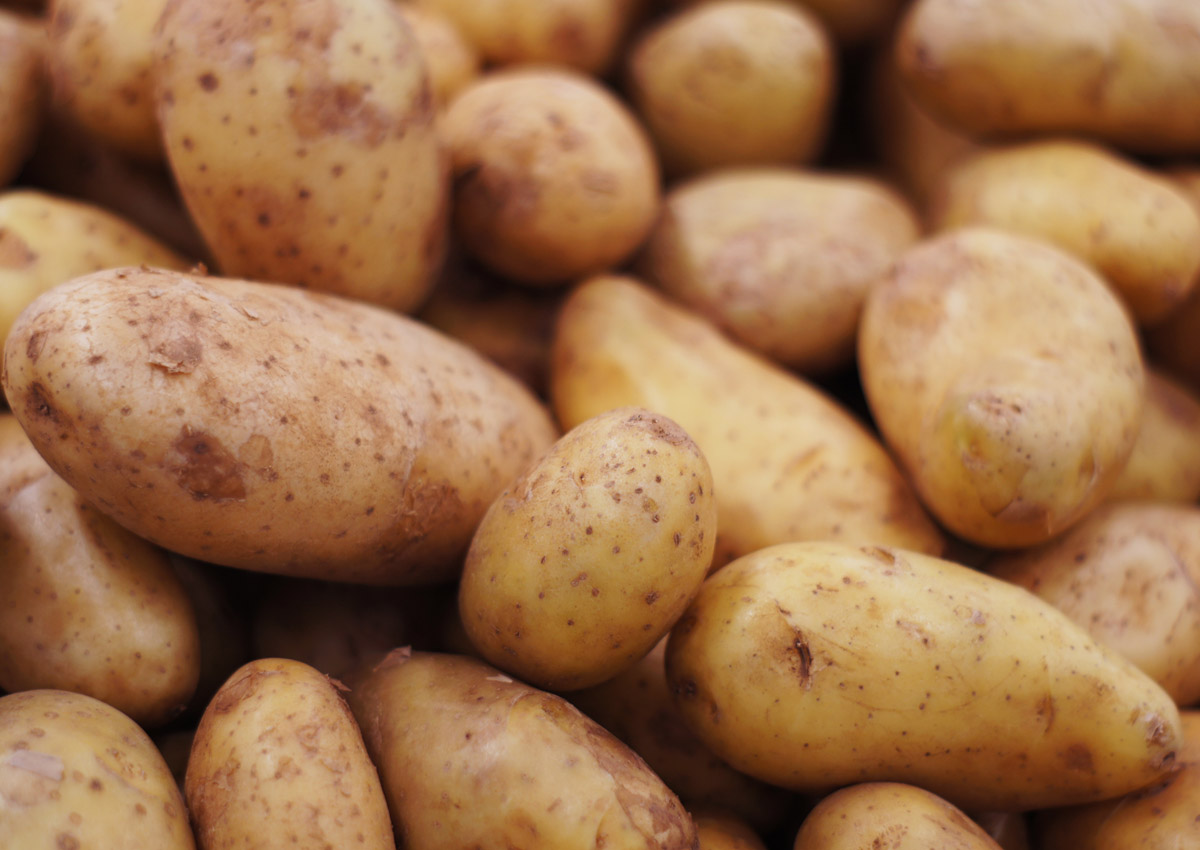
Researchers Use CRISPR to Understand Genetic Characteristics of Wound Healing in Potatoes
September 1, 2021| |
To help reduce huge losses in the potato industry, biochemist Dylan Kosma from the College of Agriculture, Biotechnology & Natural Resources at the University of Nevada, Reno, is using a biochemistry approach to identify genetic characteristics of the wound healing process in potatoes.
Potato tuber wound healing involves suberin, a corky material that makes up a large proportion of "skin" that covers wound sites. Suberin is a lipid polymer that is produced by all plants and is a major component of wound healing tissues in potatoes. Poor suberin production during the wound healing process means post-harvest potato losses. Efficient wound healing and associated suberin production are critical for sealing off tuber wound sites to prevent pathogen entry and associated tuber losses in storage.
Kosma's team used CRISPR-based editing to identify the genes in potatoes to better understand the master switches that activate wound suberin deposition. The team identified the first transcription factors known to regulate the deposition of components that make up the skin that forms during the wound healing process in potatoes. They found two potato transcription factors, StMYB102 (PGSC0003DMG400011250) and StMYB74 (PGSC0003DMG400022399), as regulators of wound suberin biosynthesis and deposition and are important regulators of wound suberization process in tubers.
For more details, read the article in Nevada Today.
| |
You might also like:
- Research Identifies Best Gene to Provide Potatoes Resistance Against Late Blight
- Key Enzyme for Suberin Biosynthesis in Plants Opens Way Toward Stress-Tolerant Bioenergy Crops
- Suberin Plays Vital Role in Plant Nutrient Absorption
Biotech Updates is a weekly newsletter of ISAAA, a not-for-profit organization. It is distributed for free to over 22,000 subscribers worldwide to inform them about the key developments in biosciences, especially in biotechnology. Your support will help us in our mission to feed the world with knowledge. You can help by donating as little as $10.
-
See more articles:
-
News from Around the World
- Our World in Data Says Only ~10% of Global Food Crops Depend on Pollinators
- SOLVE Info-Sufficiency on Genome-edited Crops
- Kenyan Feed Manufacturers Ask Gov't to Allow Importation of GMO Feed Materials
- Dynamic Model Measures Impact of Light Fluctuations on Photosynthesis
- Animal Biotech Experts Brief Stakeholders in Asia Oceania Region
- Ukraine Government Supports Two Draft Laws on GMO Regulation
- Genome-Edited Wheat Field Trial Gets UK Government Approval
-
Research Highlights
- Aspergillus Gene Confers Salt Tolerance to Soybean Plants
-
Plant
- Semi-dwarf Rice Developed Using CRISPR-Cas9
- Understanding Benefits Increases Consumers' Willingness to Accept, Buy Novel Foods
- Researchers Use CRISPR to Understand Genetic Characteristics of Wound Healing in Potatoes
-
Health
- Researchers Shed New Light on the Molecular Detail of COVID-19
-
Read the latest: - Biotech Updates (April 24, 2024)
- Gene Editing Supplement (April 24, 2024)
- Gene Drive Supplement (February 22, 2023)
-
Subscribe to BU: - Share
- Tweet

